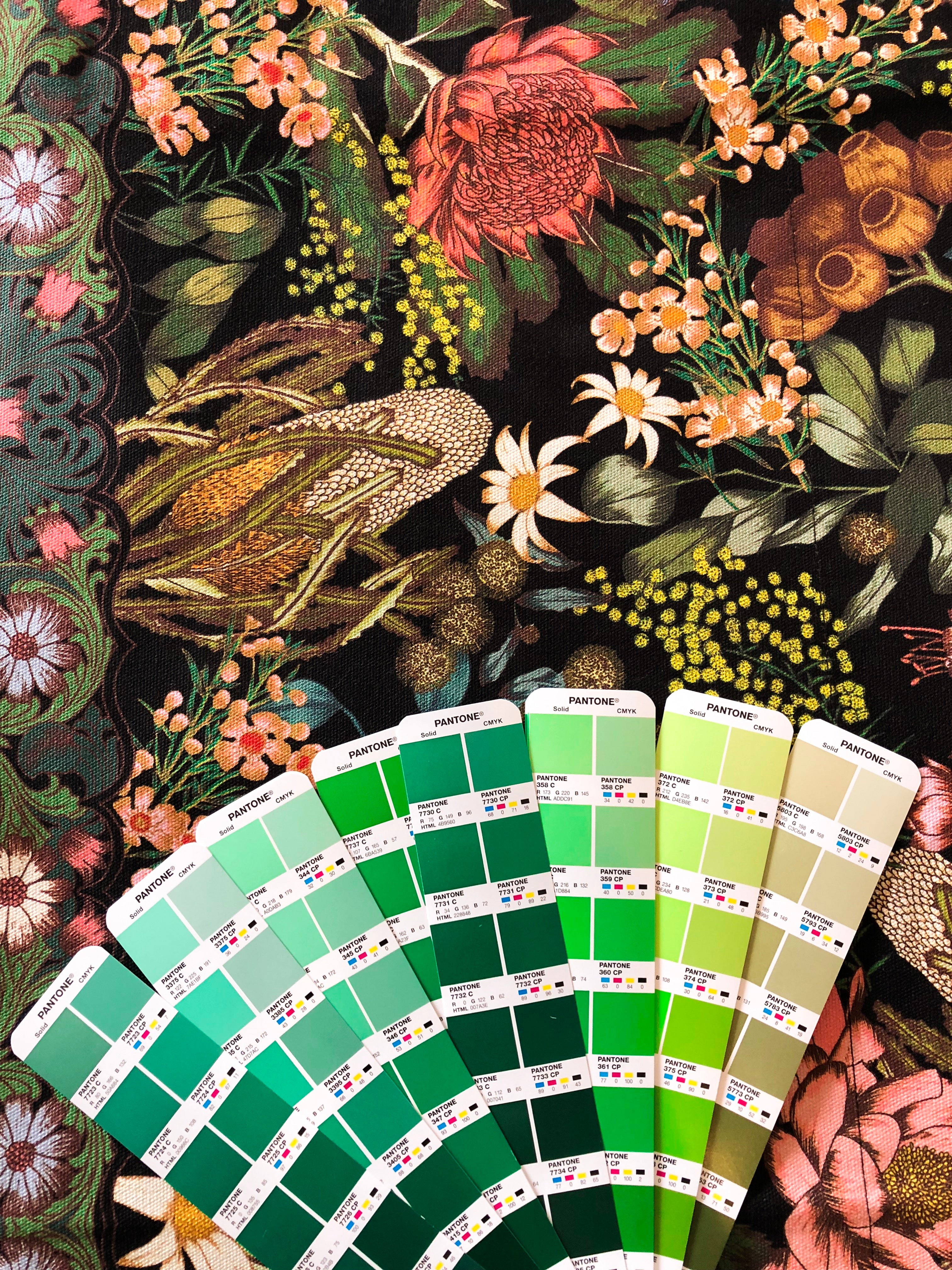We often get asked about our unique hand drawn prints so we're taking you behind the scenes of how our prints are created with textile designer and Wandering Folk founder Sharnee Thorpe.
Before Sharnee began the journey of Wandering Folk 4 years ago she studied a Bachelor of Arts in Textile Design at RMIT Melbourne back in 2011. She has worked with many well known Australian fashion labels as a freelance designer in the 6 years since her graduation, creating one of a kind artworks that you may recognise or even have in your own wardrobe, bedroom or kitchen!
Sharnee describes her design process below and for a little more discussion on this topic you can listen in on her recent podcast with Keep it Creative, where she discuses becoming a textile designer and the trials and triumphs of Wandering Folk.

 The print design process begins with collecting inspiration from eras gone by, art movements, nature and vintage prints. Most of the time I’ve already seen something that has caught my eye for a print so I just develop and research this further to create more of a story around the print before I begin. Next I create a mood board with all the ideas to bring the theme together so it has a clear vision.
The print design process begins with collecting inspiration from eras gone by, art movements, nature and vintage prints. Most of the time I’ve already seen something that has caught my eye for a print so I just develop and research this further to create more of a story around the print before I begin. Next I create a mood board with all the ideas to bring the theme together so it has a clear vision.  Then the fun begins... getting creative and hand drawing up the elements for the print, these are called – motifs. Once I've hand drawn lots of different motifs that will make up the print, for example with our Native Wildflower print, it has lots of flower motifs, then there is the corner details and the border details. All of these elements need to be considered while you're drawing, so when you scan in your drawings to start designing on the computer you will have enough motifs to make up your print.
Then the fun begins... getting creative and hand drawing up the elements for the print, these are called – motifs. Once I've hand drawn lots of different motifs that will make up the print, for example with our Native Wildflower print, it has lots of flower motifs, then there is the corner details and the border details. All of these elements need to be considered while you're drawing, so when you scan in your drawings to start designing on the computer you will have enough motifs to make up your print.

 Once all the drawing is done I'll scan it all into Photoshop to start the colouring process. This can be quite time consuming depending on what style the print is going to be. For the Native Wildflower print I use brushes in Photoshop to create depth and shading in the flowers to make them look more life like.
Once all the drawing is done I'll scan it all into Photoshop to start the colouring process. This can be quite time consuming depending on what style the print is going to be. For the Native Wildflower print I use brushes in Photoshop to create depth and shading in the flowers to make them look more life like.  Once all the motifs are coloured in I can play around with placement. All of the picnic rug prints have a centre feature and a border design so they are very complex to put together, but once you have designed one corner of the print you can reflect that out to make sure all the other corners are the same.
Once all the motifs are coloured in I can play around with placement. All of the picnic rug prints have a centre feature and a border design so they are very complex to put together, but once you have designed one corner of the print you can reflect that out to make sure all the other corners are the same.
 After the design is finished I need to choose the colours for the print either from the Pantone colour book or my own colour codes provided by my printers. It's always fun choosing the colours, but then it’s quite the process trying to get the colours right with my supplier. This can take months of sampling to achieve the desired colours as I’m quite fussy and love getting the colours perfect.
After the design is finished I need to choose the colours for the print either from the Pantone colour book or my own colour codes provided by my printers. It's always fun choosing the colours, but then it’s quite the process trying to get the colours right with my supplier. This can take months of sampling to achieve the desired colours as I’m quite fussy and love getting the colours perfect.

Follow Sharnees textile design journey on her website and Instagram @sharneethorpe
Listen to her June 2019 Keep It Creative podcast here.


 Once all the drawing is done I'll scan it all into Photoshop to start the colouring process. This can be quite time consuming depending on what style the print is going to be. For the Native Wildflower print I use brushes in Photoshop to create depth and shading in the flowers to make them look more life like.
Once all the drawing is done I'll scan it all into Photoshop to start the colouring process. This can be quite time consuming depending on what style the print is going to be. For the Native Wildflower print I use brushes in Photoshop to create depth and shading in the flowers to make them look more life like. 







